There are many sides to Belgrade: historic and cultural, independent and modern, lively and youthful, depending on your travel preferences, there’s a perfect Belgrade neighbourhood for your hotel needs.
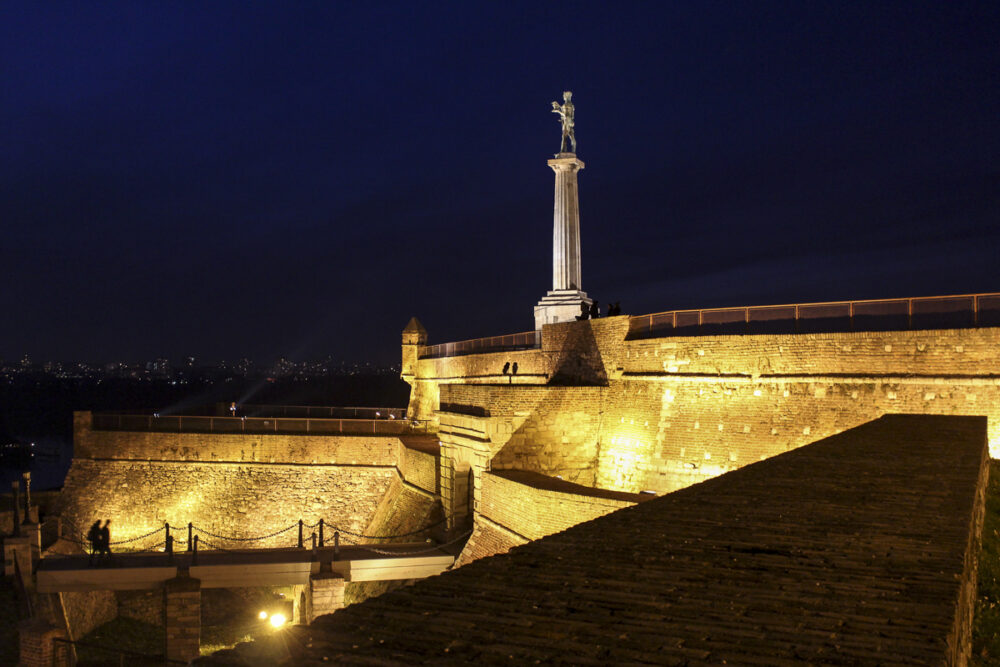
Kalemegdan Citadel at night (Photo: Paul Stafford)
Down on the banks of the Sava, just before it merges with the Danube in a chocolatey profusion of silty water, a cluster of old barges bursts into life after sundown in summer. These nightclubs are legendary. It’s as though the citizens of New Belgrade feel compelled to live up to their neighbourhood’s name by showing they can party with the best of them. But this might not be to everybody’s taste.
On the other side of the Sava, the thick walls of Belgrade Fortress have crowned the pinnacle of land that has held the Stari Grad (literally Old Town) for more than two thousand years. The neighbourhood is packed with the finest cultural and heritage institutions in Serbia. Elsewhere in the city there are mighty Orthodox churches, fascinating museums and modern developments that are indicative of the increasingly global-facing nature of Serbia, a country that is projected to have one of the fastest growing European economies in the coming years.

Sveti Sava church in Belgrade (Photo: Paul Stafford)
When looking for the best place to stay in Belgrade, you’ll discover far more private apartments and Airbnbs than hotels. The latter, however, are often far more dependable, much easier to locate, and are often better value for shorter stays. If staying in an apartment, be sure to have data on your phone, as flats and their key boxes are often located within Yugoslavia-era apartment blocks. The following neighbourhood exploration covers the best hotel rooms in Belgrade.
Neighbourhoods
Whether you’re visiting Belgrade for the tourism, the nightlife, the culture, to watch the football or for business, the following five neighbourhoods represent the best variety the city has to offer. Each would be a worthy base for your trip, offering a variety of options to suit your needs and budget.
Stari Grad for the best of Belgrade
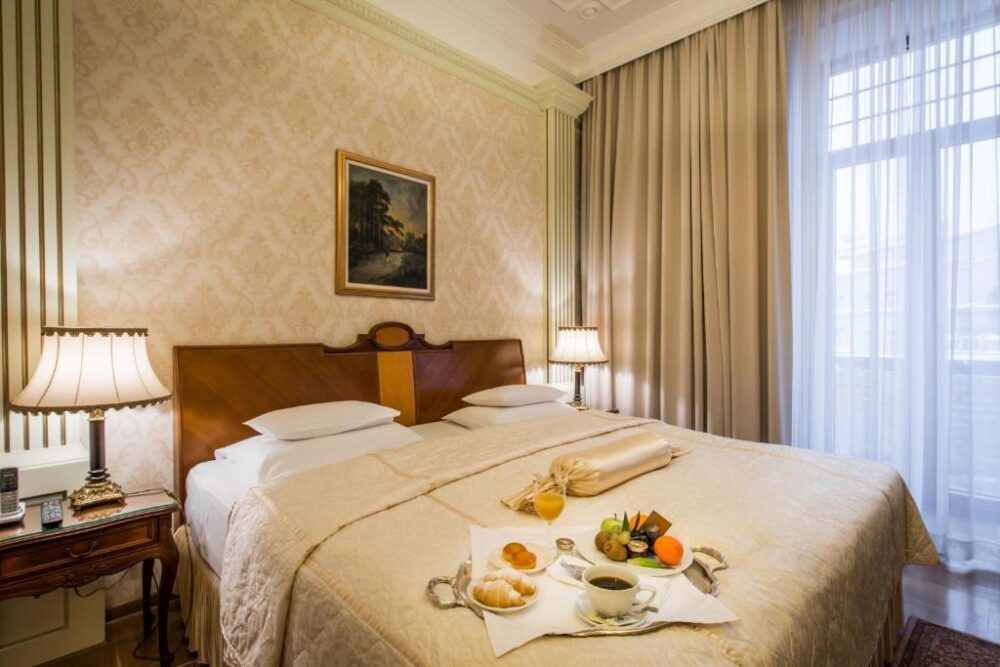
Hotel Moskva (Photo: Booking.com)
The obvious choice for anybody spending more than a night in Belgrade would be to stay in the Stari Grad. After all, the grid of oft-pedestrianized streets holds the bulk of the city’s charm, its best restaurants and many of its finest historic sights. Punctuated by Kalemegdan Citadel (aka Belgrade Fortress), sitting in the sculpted heart of Kalemegdan Park, you could easily spend half a day wandering the expansive grounds, ruminating over the war memorials and weaponry at the Vojni (Military) Museum and wandering the waterfront where the Sava and Danube rivers collide.
The northern part of Stari Grad used to be given over to factories and poor quality housing, but the Dorćol portion of Stari Grad is undergoing something of a renaissance. Sure, there are still many factories, but as in many other major European cities, youthful energy has swept in and started converting formerly run-down warehouses into trendy nightlife spots and restaurants, such as the excellent Docker Brewery. As such, you’ll find some of the best nightlife in the area, as well as a creative, youthful atmosphere and better value accommodation, all within a quick walk of the Old Town’s core.
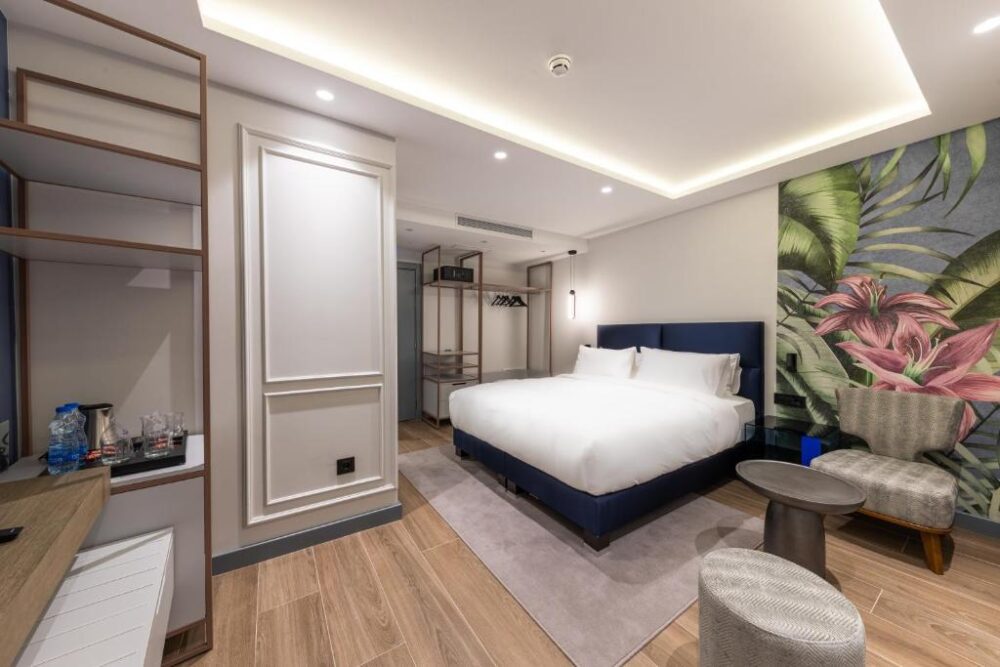
Hotel Calisi (Photo: Booking.com)
Unsurprisingly, Stari Grad’s hotel selection is the broadest of anywhere in the Serbian capital. You can stay in the luxurious settings of the Hotel Moskva (Balkanska 1), a four-star hotel located in a striking Art Nouveau building. If you’d prefer to be in the thick of all things Stari Grad, Maison Royale (Kneza Mihaila 52) is located along a pedestrianised street near the Kalemegdan. This property has been around for many years, although its rooms are regularly freshened up. Over on the riverfront, Hotel Calisi (Karađorđeva 35) is a refined Art Deco space in the trendy Savamala district. Among the many excellent hostels dotted around the Old Town, NapPARK Hostel (Pančićeva 8) in Dorćol is a beautifully designed pastel blue and yellow spot with good value dorm beds.
Vračar for debonair digs
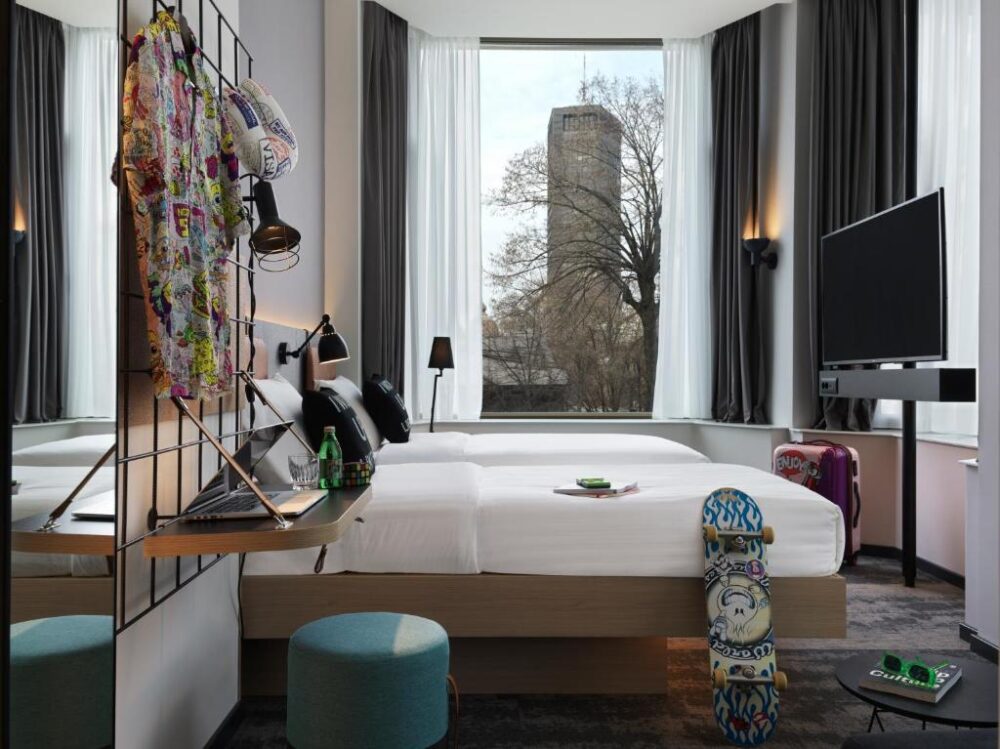
Moxy Belgrade (Photo: Booking.com)
Pleasantly well-heeled, with broad boulevards (that are increasingly choked with traffic) and leafy neighbourhoods, Vračar is a great alternative to Stari Grad. For anybody looking for a better value room within easy walking or tram distance from the Old Town, you’re likely to find a decent option in this area, particularly in the northern part, where a slew of international chain hotels is located. At the core of Vračar is Sveti Sava, one of the largest Orthodox churches in the world, plus the Nikola Tesla Museum, one of the best attractions in the country.
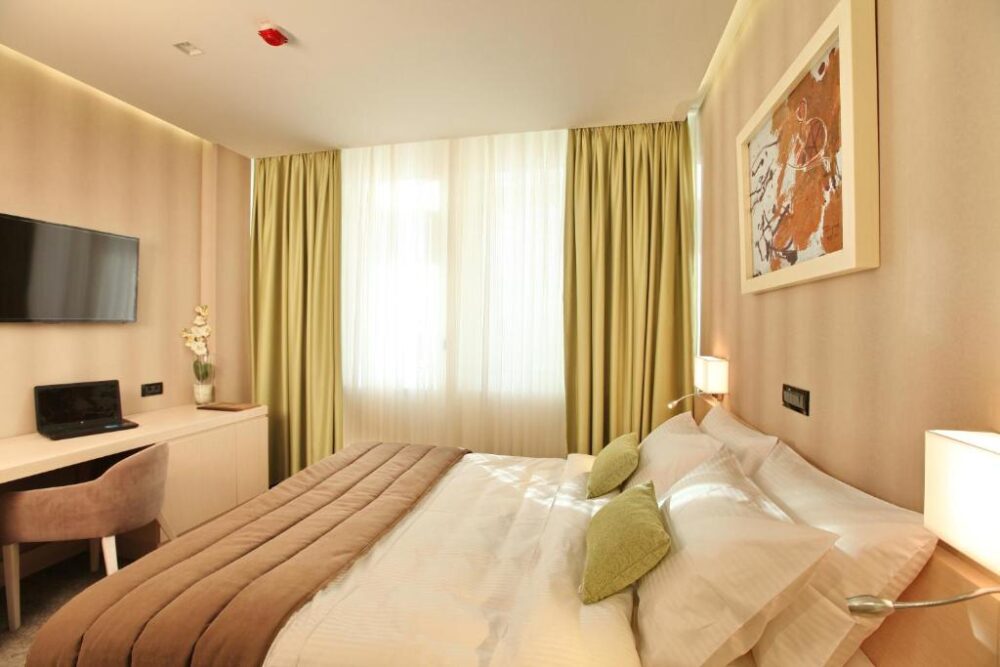
Hotel Argo (Photo: Booking.com)
Among the peaceful neighbourhoods to the north end of Vračar you’ll find many of Belgrade’s best hotels. Leading the pack is the ever-stylish Moxy (Njegoševa 2), which combines sleek minimalist design with a little dab of kitschy Americana. Also true to the brand are the excellent common spaces, such as the hotel’s bar and fitness centre. If you’d prefer to say at a locally run property with high standards, Hotel Argo (Kralja Milana 25), with its warm pastel green and apricot tones, is a worthy alternative. Konak Stella (Hadži Melentijeva 75) is a sleek, simple budget stay with decent twin and triple rooms.
Savski Venac for a relaxed stay
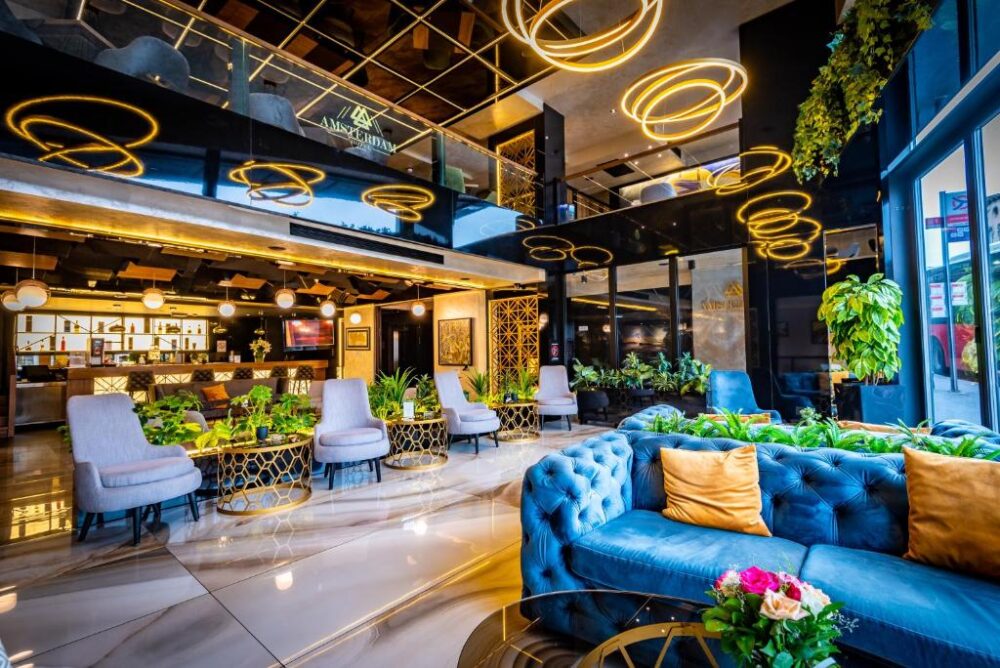
Hotel Amsterdam (Photo: Booking.com)
Bordering the Old Town on the banks of the Sava, down past the Royal Palace, you’ll find Belgrade’s greenest neighbourhood, Savski Venac. To the north end, Savamala, a former run-down port area that is now a creative district, nightlife hub and revitalised adjunct of the Old Town continues south along the Sava River to become Belgrade Waterfront. The area is undergoing a significant transformation, albeit reportedly without the consent of some former residents, who were forcibly removed from their homes to allow the demolition teams in. A new waterfront park is emerging slowly from the cluster of cranes and barriers.
But the best accommodations can be found inland, which is primarily the preserve of Serbia’s major museums, such as the Museum of Yugoslavia and the House of Flowers, which holds the grave of former leader of Yugoslavia, Josep Broz Tito. You’ll also find the home grounds of the city’s fierce rival football clubs: Red Star Belgrade (Crvena Zvezda) and Partizan in this area.
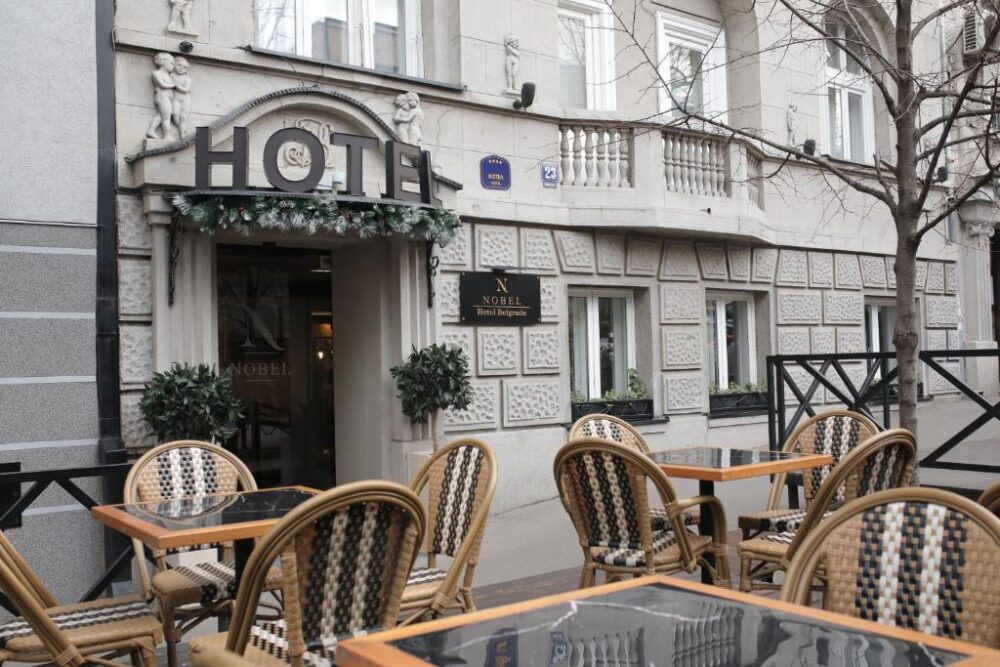
Nobel Hotel (Photo: Booking.com)
Located right on the precipice between Savski Venac and Stari Grad, overlooking the airport bus stop, is Hotel Amsterdam (Jug Bogdanova 10). Although not the quietest choice as befitting the rest of the neighbourhood, the indoor pool, sauna and spa areas offer plenty of relaxation avenues, while the rooftop restaurant gives you city-view dining. Garni Hotel Zavicaj (Oblakovska 59) is within easy walking distance of both main football stadia, offering an elegant touch of rustic Serbian charm. If you’re after Euro-chic comfort, the excellent breakfasts served at Nobel Hotel (Višegradska 23) set guests up perfectly for a day of exploration.
Zemun for laid-back Serbian culture
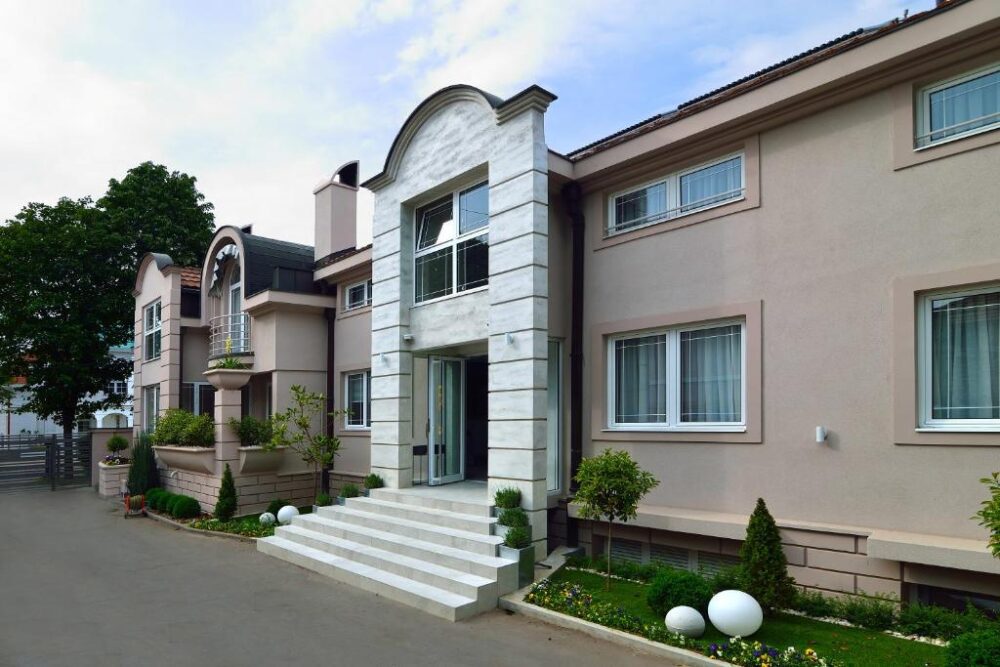
Garni Hotel D10 (Photo: Booking.com)
While it is officially considered a part of Belgrade, many Zemun locals will likely tell you that they’re independent from the big city. Although also located on the south bank of the Danube River, it sits opposite the main bulk of Belgrade on the east bank of the Sava, alongside New Belgrade. Zemun, though, has history. Created by the Habsburgs, much of the architecture is in the Austro-Hungarian vein of the 18th and 19th centuries, ranged around the red-brick Gardoš Tower, built in 1896. Likewise, many of Zemun’s hotels are steeped in that quaint charm that sets the neighbourhood apart from the rest of Belgrade.
Hotel LoRa (Starca Vujadina 8) is indicative of the unpretentious, yet cosy ambience common to most of the hotels in Zemun. If you’re driving, there’s also a parking garage (another reason to stay in Zemun or Novi Beograd). Another branch of the much-loved mid-range hotel chain taking over Belgrade, Garni Hotel D10 (Dunavska 10) is a top Zemun choice, sited a few minutes’ walk from the Danube. Over on the budget-friendly end of the scale, Hostel Theater 011 (Magistratski trg.) provides good value private rooms in an old building located right around the corner from Zemun Market.
New Belgrade for good modern living
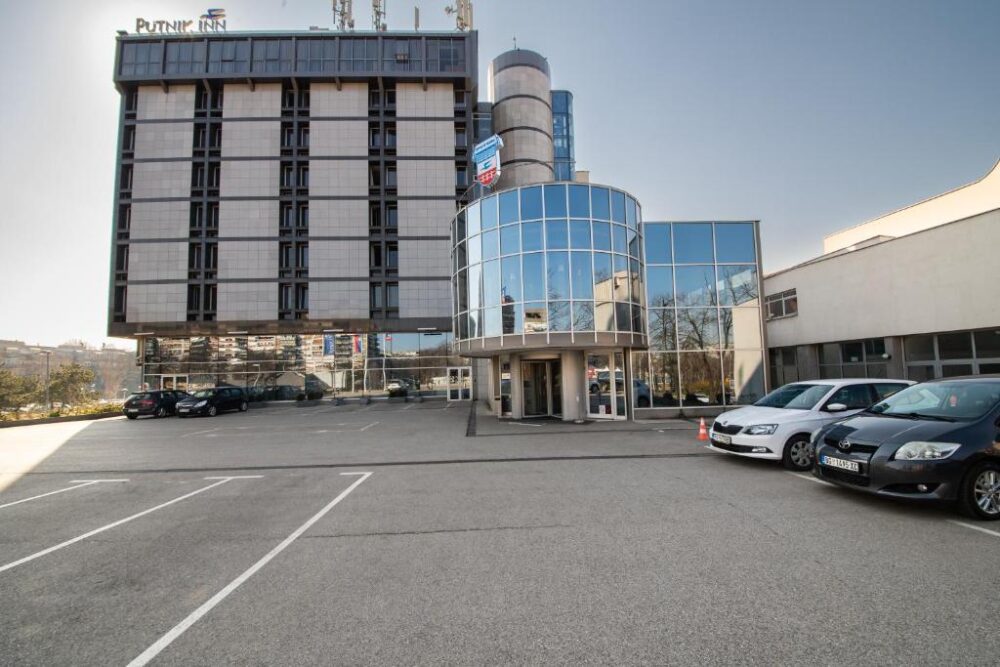
Putnik Inn (Photo: Booking.com)
Novi Beograd (New Belgrade) has, as the name suggests, a completely different atmosphere to the main city. Unlike Zemun, with its historic charm, New Belgrade harbours a mix of post-WWII Brutalist architecture along wide boulevards, and modern glass high-rises holding the offices of global corporations. Down in the streets, this energy is mirrored by the health food restaurants and clubs that pervade the river bank, particularly in summer, when the river barges, known as splavovi, turn into a 24-hour party zone.
With near-jarring contemporary design, floor-to-ceiling windows and high quality furnishings, Falkensteiner Hotel Belgrade (Bulevar Mihajla Pupina 10k) is everything modern Belgrade wants to appear: global, successful and refined. All are things this hotel manages to pull off. Putnik Inn Belgrade (Palmira Toljatija 9), on the other hand, is a delightful mishmash of reflective glass and concrete cubes. It’s ugly Brutalist architecture at its winsome best. The hotel interior is much more pragmatic and most room tariffs include free spa access. ArkaBarka Floating Hostel (Bulevar Nikole Tesle bb) is precisely what you’d expect it to be, a hostel on the Danube, with clean, cosy rooms and decking over the water.
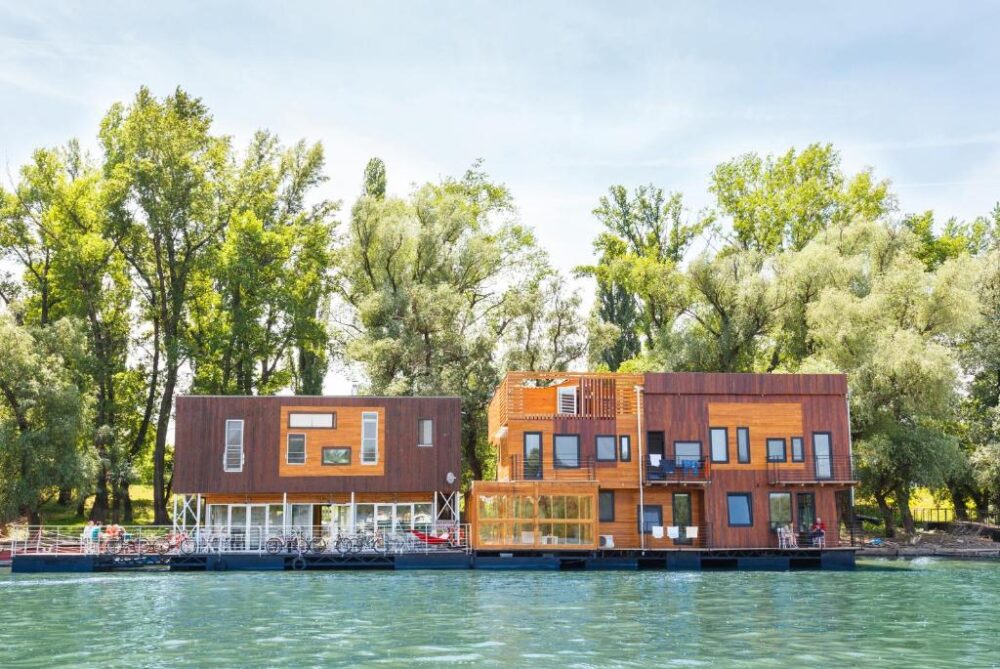
ArkaBarka Floating Hostel (Photo: Booking.com)
Getting Around Belgrade – The 72 bus connects from Jug Bogdanova in Belgrade city centre to the international terminal at Nikola Tesla Airport, taking around 45 minutes. Within the city, trams and trolleybuses are the main means of transportation. Most distances between sights are easy enough to walk, and Uber is an effective alternative for door-to-door transport.